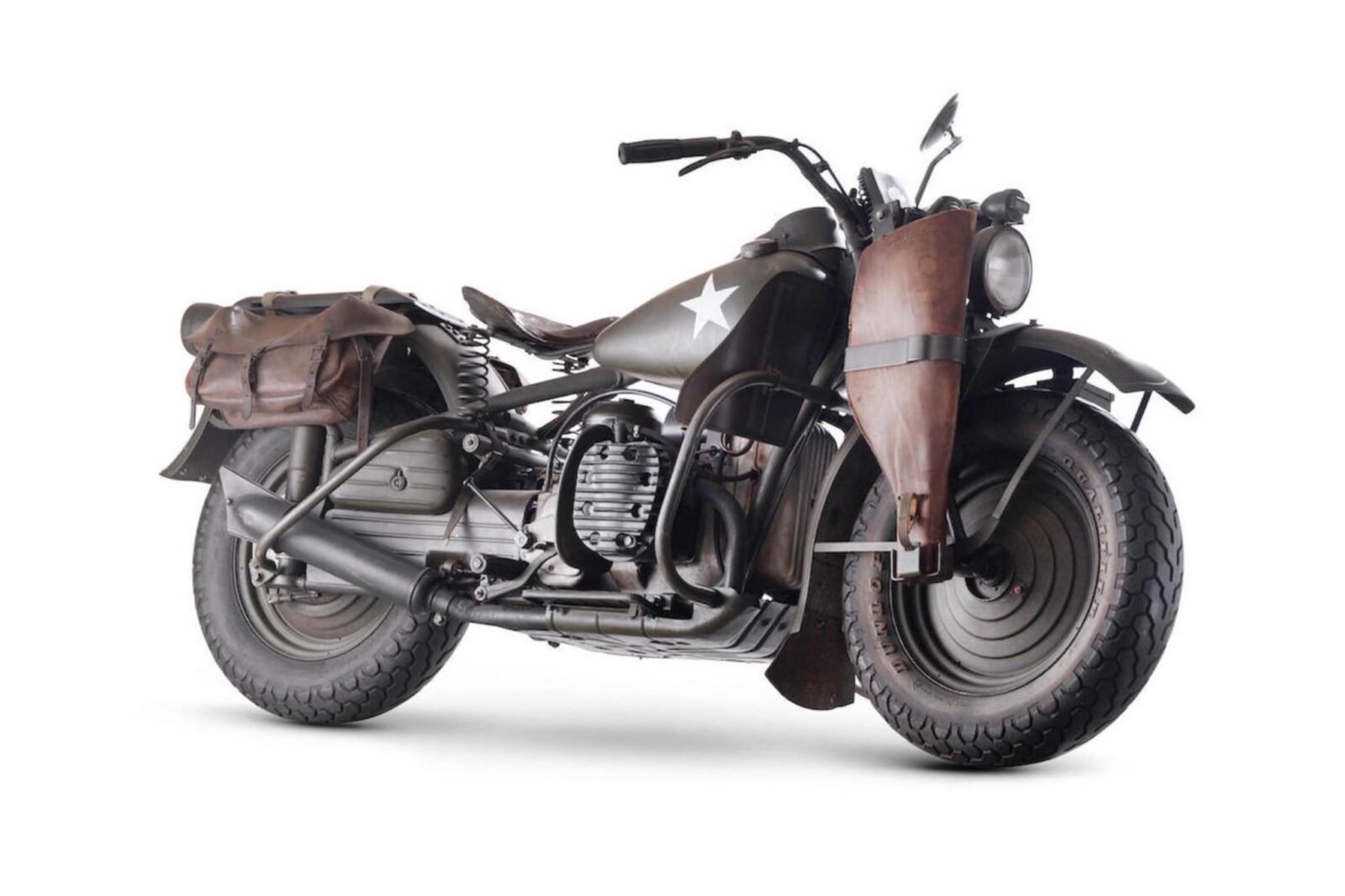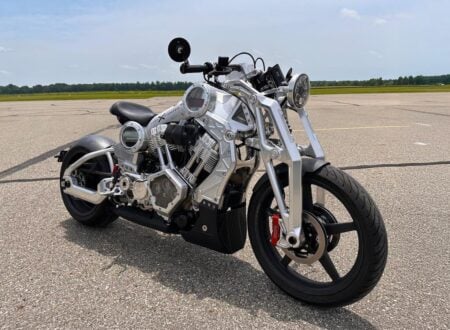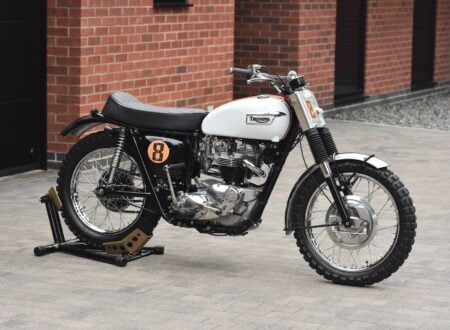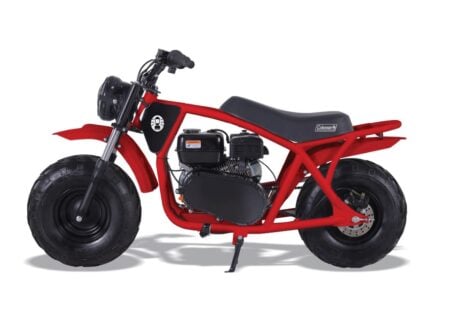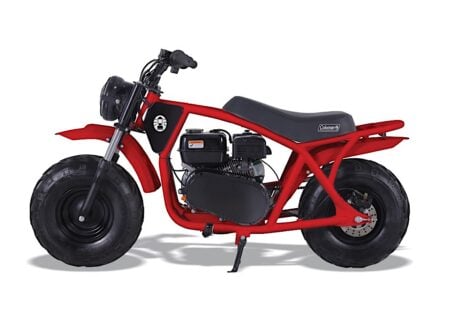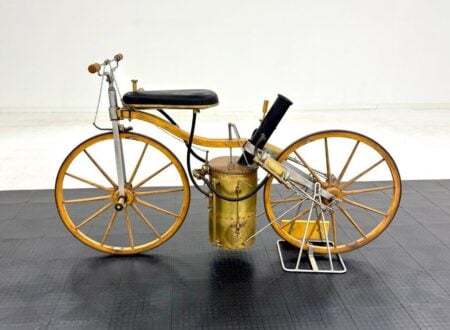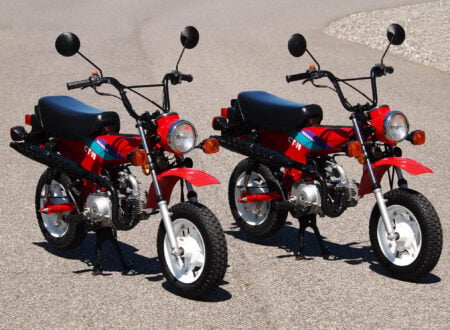The creation of the first viable motorcycles began in earnest in the early twentieth century, and as is often the case with new types of vehicle – their militarisation was to happen not long after that. When we think about World War I we tend to think of the mechanization of warfare, the emergence of the tank, the use of cars and trucks, not to mention the sophistication of the weaponry that included the new and much more devastating artillery, machine guns and repeating rifles using smokeless propellants and explosives made possible by Alfred Nobel’s discoveries.
Yet the First World War was fought by many on horseback, and mules were primary transport animals. Unlike the Second World War, The Great War was the transitional war between nineteenth century technology using black powder, horses and mules, to the new mechanized warfare of the twentieth century. Just to emphasize the transitional nature of the tactics and technology its worth noting that the last successful cavalry charge in history was done during the First World War when 800 cavalrymen of the Australian 4th Light Horse armed with 18” Enfield bayonets and mounted on their big “Waler” horses charged the Turkish fortifications at Beersheba in Palestine.
The horseback attack was swift and despite the fact that they charged an enemy armed with artillery, machine guns, and Mauser ’98 repeating rifles the Australian cavalry prevailed. The Great War was a war that was filled with surprises, most of them unpleasant, and no doubt the Australians were very surprised that they were not all killed. It was for the First World War that the military motorcycle made its real debut, although it also appeared with the forces of Pancho Villa in the Mexican Revolution. Pancho Villa discovered that the big Indian motorcycles were ideal for his raiding activities and acquired a few of them.
Pancho Villa understood that the motorcycle offered speed and agility ideal for hit and run raids. These same characteristics didn’t go unnoticed by military commanders in the United States, Britain and Germany. And when General Pershing made his way across the border in 1916 to attempt to capture Pancho Villa he took some Harley-Davidsons with him. The first motorcycles to make their way to the front lines of the Great War (1913-1918) however were the British Douglas, Triumph, its German counterpart the TWN, and the German NSU. Triumph Motorcycles had been started in Britain by a German immigrant from Nuremberg named Siegfried Bettmann who set up his business in Coventry and later also set up a German branch in Nuremberg. Before the outbreak of the First World War in 1913 the two companies were set up to operate under different names. In Britain the motorcycles were called Triumph whilst those made in Nuremberg were branded TWN (Triumph Werke Nürnberg).
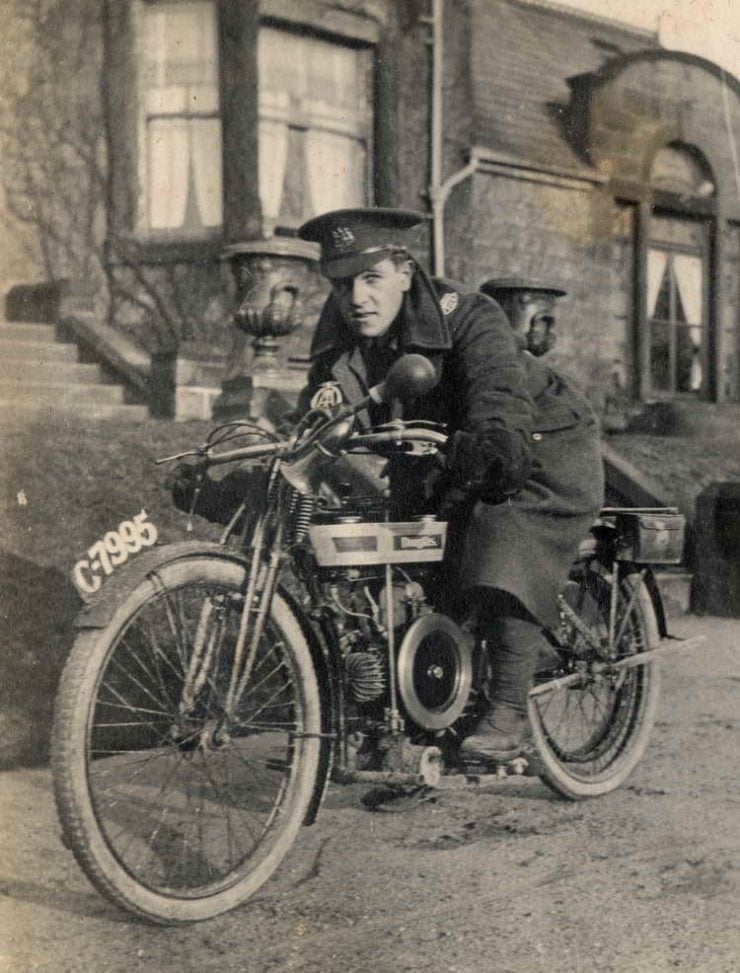
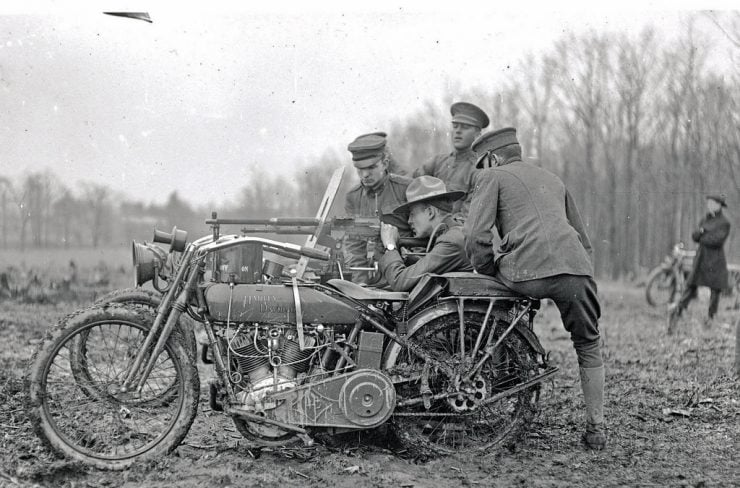
The First World War set the tone for mechanization and proved the motorcycle to be one of the viable replacements for the horse. In the next world war there would be no more completely successful cavalry charges although the Polish 18th Pomeranian Uhlans cavalry charged the Nazi German infantry forces near Krojanty on 1st September 1939 and were initially successful in disbanding the German infantry and forcing them to retreat. The Germans then brought in armored cars and tanks with heavy machine guns and slaughtered about a third of the Pomeranian Uhlans who were themselves then forced to retreat. Their action however enabled a strategic withdrawal by Polish troops in the face of the mechanized Nazi onslaught. The German Army began planning for the Blitzkrieg tactics that would see them sweep across Europe with startling speed during the 1930’s.
The secret to Blitzkrieg was the ability to move an army at vehicle speed, not at walking speed, across a landscape. The tactical scenario was to include aircraft, especially the Stuka dive bomber to both damage and totally demoralize the enemies of Germany, tanks, and mechanized troop transports which included motorcycles, often with side-cars mounted with machine guns. A motorcycle may not afford any protection in a fight but it does enable a machine gun crew to travel quickly over rough terrain and even more quickly if there is a road. The two main German military motorcycles were the Zundapp and the BMW. The beginnings of the BMW R Series motorcycles with their horizontally opposed twin cylinder Boxer engines began in 1921.
In the wake of the First World War a number of the 70,000 Douglas Boxer twin cylinder motorcycles that had come to Europe with the British Army were left in Europe and sold off as military surplus. One Douglas was acquired by the Works Foreman at BMW, a man named Martin Stolle. BMW’s Chief Engineer, Max Fritz, noticed Martin Stolle’s Douglas and saw in it the inspiration for a new BMW motorcycle. Martin Stolle agreed to allow Max Fritz to reverse engineer his bike and so Martin’s Douglas motorbike was duly taken completely apart and re-assembled so Max Fritz could acquire the best ideas in the creation of his new BMW motorcycle.
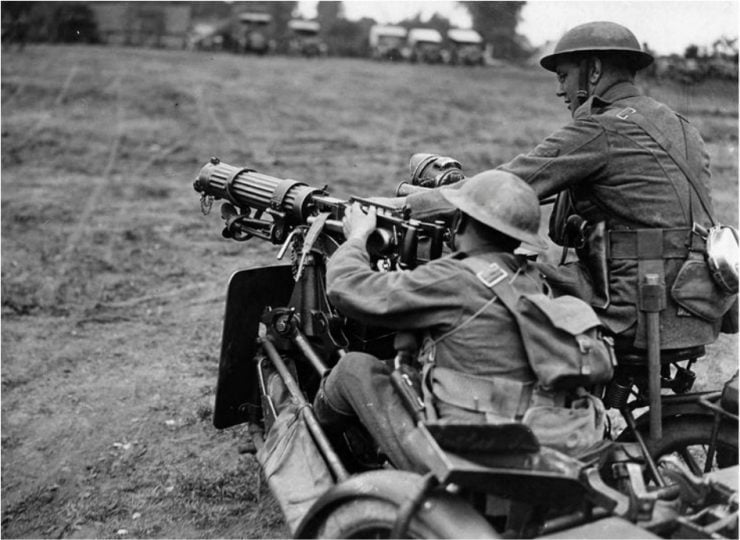
Max Fritz was working on a motorcycle design that would be reliable in the most rugged conditions and this included the ability to function in agricultural Germany, in the German colonies in Africa, and for military and police use. To this end Max Fritz chose to re-orient the horizontally opposed boxer engine from the longitudinal positioning of the Douglas to its being lateral. Not only did that aid engine cooling and maintenance but it also mounted the engine and gearbox so they were perfectly placed for using a shaft drive to the rear wheel. A shaft drive is much more reliable in dirt, dust and sand than a chain drive. The motorcycle created by Max Fritz was the iconic R32 and it became the ancestor of all the R Series boxer engined BMW motorcycles that would follow. The R32 went into production in 1923 and went through a couple of updates, the R42 and R52. BMW continued to update and create new models through the twenties and thirties not only for commercial sale but also anticipating the military needs that were fast approaching.
With Hitler’s moves to militarize Germany in the mid to late thirties BMW and other German motorcycle manufactures, especially Zundapp, were well aware they would need viable military motorcycles to sell to the military. In 1938 the official request came for BMW to create a motorcycle for the German Army. This model was designated the R75 and it was decided that the old side-valve engines used on the previous model R71 would not suffice for the new military motorcycle. BMW therefore created an overhead valve engine of 750cc capacity, an engine that would become the foundation of BMW’s post war motorcycles. The military R75 motorcycle was designed with side-car use in mind and so had not only attachments for a side-car but also the means to drive the side-car wheel as well as the motorcycle’s rear wheel. This rear wheel set up featured a locking differential and selectable on-road/off-road gear ratios. The bike proved to be highly maneuverable and reliable in the dust, sand and mud of battlefield conditions. In fact this bike so impressed the British, Americans and Russians that all of them were persuaded to try to imitate it.
Douglas of Britain made their post war Douglas Mark V in the BMW style complete with shaft drive. The US government got both Harley-Davidson and Indian to create motorcycles like the R75. These were the Harley-Davidson XA which was more a copy of the BMW R71 side-valve motorcycle, and the Indian 841. In both cases these prototype bikes had 740cc side-valve engines and shaft drives. Neither was put into full scale production. The Soviet Union quietly imported five BMW R75s via intermediaries in neutral Sweden and copied them to create their Dnepr M-72 and after the war the Communist Chinese made a copy as well which ultimately morphed into the Chang Jiang CJ750. The Dnepr M-72 was also the predecessor of the modern day Ural. If imitation is the greatest flattery then the BMW R75 was greatly flattered, but it owed its engine architecture in part to the British Douglas.
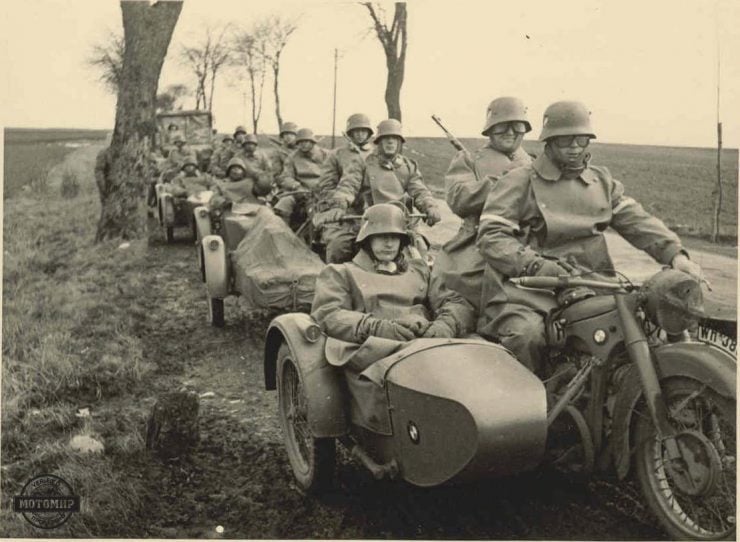
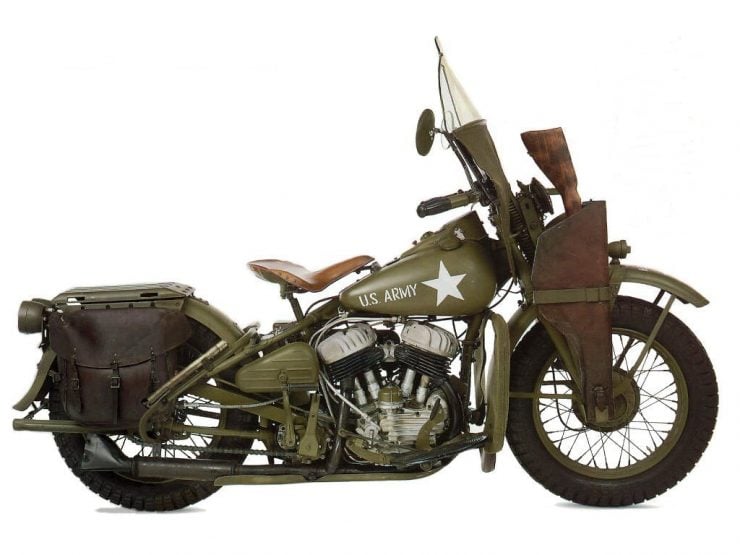
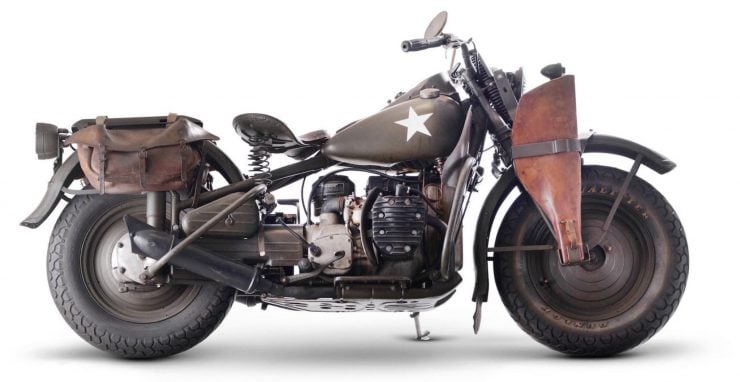
Zundapp also made a four cylinder motorcycle for the German Army. This was the K800 which had a horizontally opposed four cylinder engine and was the only four cylinder motorcycle used in the war. The engine capacity was 787cc producing 26hp and the bike had a four speed manual transmission. On the other side of the English Channel much of the British Government had been essentially living in denial as to the probability of another full scale world war with Germany, despite the protestations of Winston Churchill who found himself labeled a “war monger” and various other impolite labels. At one stage Churchill advocated a preemptive strike against Germany before it became too strong.
He stated regarding Hitler, “If a dog makes a dash for my trousers, I shoot him down before he can bite.” However, his statements were regarded as being not “politically correct” and he was ignored. The British government had the idea that if Hitler’s Germany was appeased and allowed to re-arm then they would feel like they had redeemed their national honour in the wake of their defeat in the First World War and that later they would sit down at a peace conference and choose to mutually disarm with the other nations of the world. This appeasement theory proved to be a complete pie in the sky fantasy and one of its effects was to leave Britain in an unprepared state for the coming war with Germany that Churchill foresaw. So Britain did not have a plan for purpose built military motorcycles with interchangeable parts and when she declared war on Germany in 1939, and she realized she had placed herself in a bit of a sticky wicket because of her unpreparedness not only in motorbikes but in all areas.
Churchill however continued to be prepared in every way he could think of. As the certainty of the war dawned on people he took to carrying a pistol (most likely a Webley automatic in .32ACP as was also carried by his personal bodyguard) and a cyanide pill in a pen just in case someone tried to kidnap him. As a result of the British unpreparedness caused by their belief that a war was not going to happen the British military needed to equip themselves with whatever motorcycles they could. The main supplier of military motorcycles was Norton and the Norton 16H (the H standing for “home” market whilst there was also a C model for the “colonial” market) was the main motorcycle in British services use. This bike had a single cylinder side-valve 490cc engine producing 14bhp at 4500rpm. The bike was capable of a top speed of 68mph (109km/hr) and had a four speed gearbox and chain drive to the rear wheel. Front suspension was by girder forks and there was no rear suspension as the rear end of the British soldier was expected not to require such creature comforts. Brakes were drums all around.
The Norton 16H and 16C were also the most common motorcycles to be found with ANZAC forces (Australia and New Zealand Army Corps). These bikes were also supplied to Canada and India. The War Department had a modified model 16H made for them starting from 1936 and with the outbreak of the war the Norton factory was wholly turned over to a full on effort to make as many of the “War Department” Norton WD16H bikes as was humanly possible. Even the members of the Norton Racing Team made their way to the factory floor to join the mass production effort. The number of Norton WD16Hs is unknown as the records did not survive the war. Suffice to say there were rather a lot and almost certainly a hundred thousand or so.
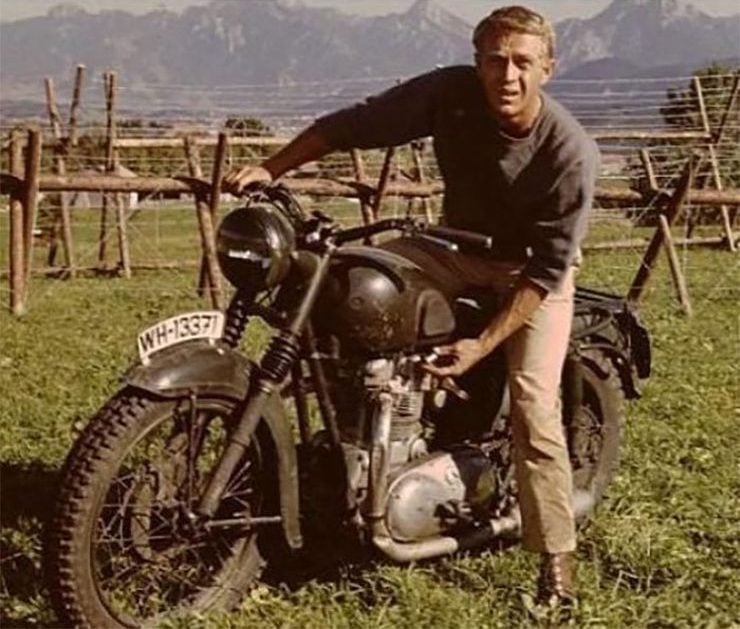
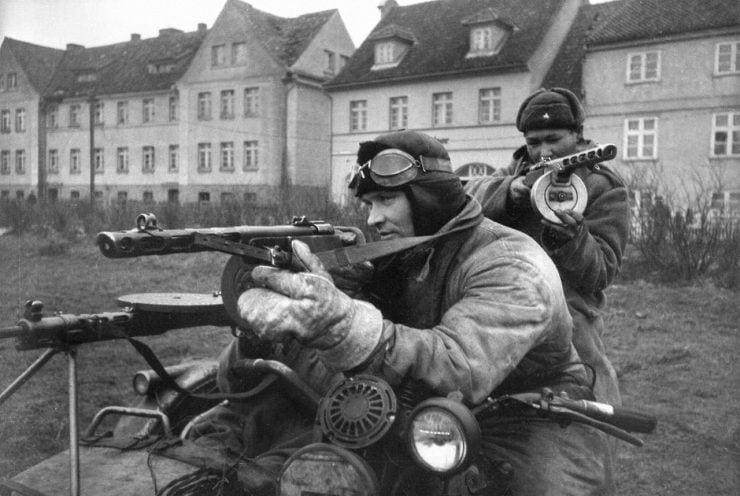
In the years since the end of the two world wars and the Korean War the role of the military motorcycle has changed. Because a four wheel drive vehicle such as the Jeep of the Second World War is a much better means of moving a machine gun crew the need for the motorcycle side-car combination has passed. A motorcycle is more likely to be used to provide individual transport for specialist personnel or special forces, and a motorcycle is easier to conceal than a four wheel drive no matter how compact it might be. There have been a number of motorcycles of various types adopted by military forces around the world, amongst them the Honda XR250s, Kawasaki KLRs and the Armstrong MT500 and MT350. The Armstrong was based around the Italian designed Rotax engine with their chassis created for it.
Armstrong began supplying these bikes in 1984 and since then Harley-Davidson purchased rights to manufacture the bikes as the Harley-Davidson MT500 and the MT350E. As the MT350E the bike is fitted with the 348cc Rotax air cooled single cylinder engine that produces 30bhp at 8000rpm. The engine is four stroke and has a single overhead camshaft. The bike’s transmission is by an “O” ring chain on hardened steel sprockets. More recently forces such as NATO have sought to rationalize their logistics and to do this have embarked on a “one fuel to fuel them all” policy. NATO is seeking to use just one fuel to make all machinery work from helicopters and fixed wing aircraft to vehicles and motorcycles. This means that all vehicles need to be able to run on JP8 aviation kerosene and/or diesel distillate.
The company at the forefront of this effort is Hayes Diversified Technologies who have modified a Kawasaki KLR650 with a diesel engine of 670cc capacity. The Hayes diesel is a liquid cooled and indirect injected single cylinder pavement thumper made to be as close to bullet proof as a motorcycle can be, after all its rider may need to literally use it as “hard cover”. The diesel engine’s power output is 33hp and this gives the bike a top speed of 95mph (153km/hr). As a military bike needs to be able to go a long way the range of the bike is 408 miles at 55mph (653kilometres at 90km/hr). Hayes is been supplying their bikes to the US Marine Corps, US Air-force and US Army since 2006 and has models for US military use and also for European NATO use. The NATO model being the M1030M1E. The HDT1030 has a five speed gearbox.
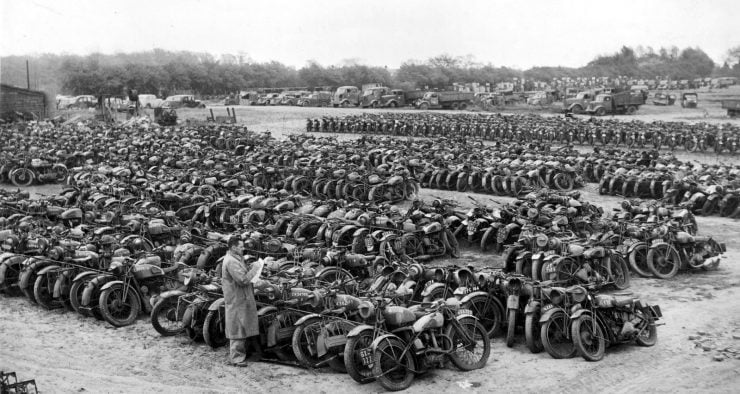
The history of military motorcycles is quite long and complex. In this article we haven’t attempted to describe all the bikes used but just some of the main ones in the major conflicts the world has seen. In this modern era military forces are intelligently trying to do what the German Army set out to do in the lead up to the Second World War; to come up with a standardized specification that will lead to maximum availability, reliability, and minimized logistics needs.
The role of the military motorcycle has changed somewhat but a motorbike is such a quick and adaptable means of transport its role for the soldier on the ground is likely only to be limited by the imagination of the soldier, and his chain of command.
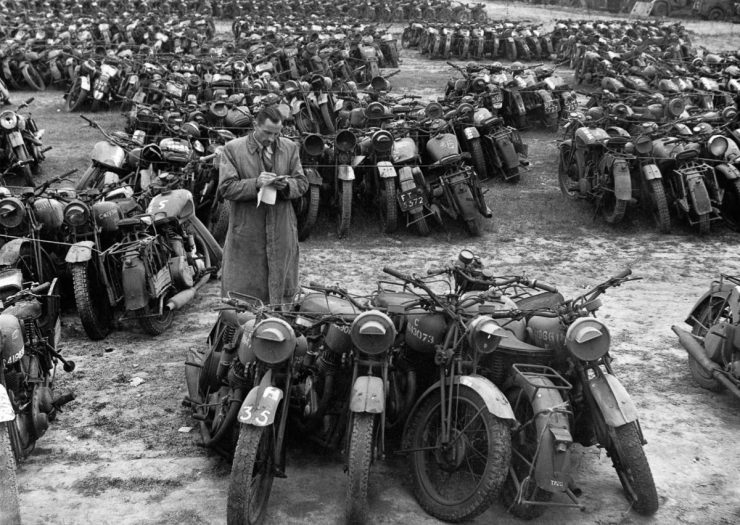
Editor’s Note: As a brief history, not every single military motorcycle ever made will appear in this article and its focus is largely on 20th century motorcycles. If you feel that we’ve missed something important that should be included, please shoot us a message on our Facebook or Twitter and we’ll get to work on it.

